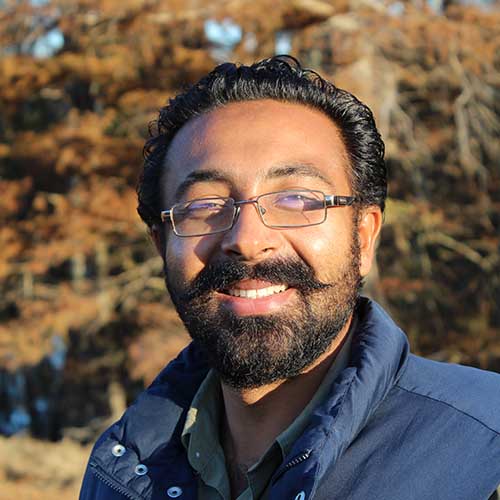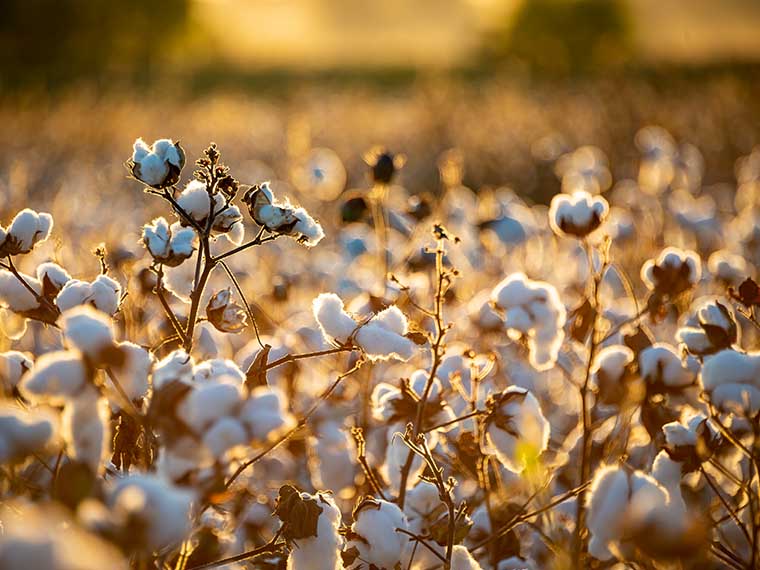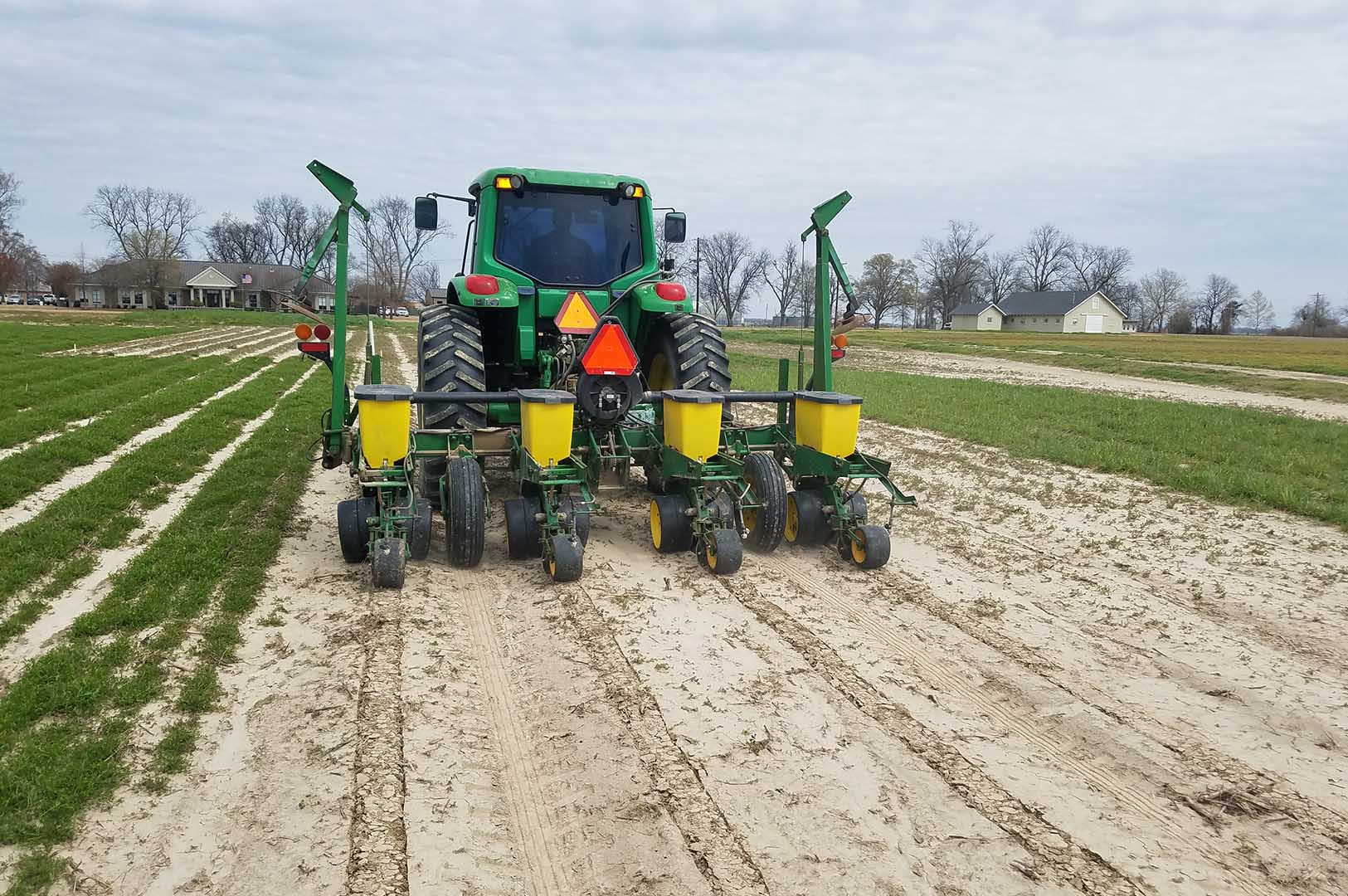The information presented on this page may be dated. It may refer to situations which have changed or people who are no longer affiliated with the university. It is archived as part of Mississippi State University's history.
Isreal's King Solomon (965 B.C.), noted for his wisdom, once said, "What has been will be again, what has been done will be done again; there is nothing new under the sun."
This saying holds true for cover crops. Dr. Wayne Ebelhar, a MAFES agronomist at the Delta Research and Extension Center, has witnessed this phenomenon in his 40 years of applied research.
"Cover crops in row crop production is not a new concept by any means and has been used in conservation systems for centuries, we called it winter weeds," Ebelhar said.
Ebelhar continued, "the persistence of herbicide resistant weeds has made fall and winter weed control essential for controlling these undesirable plants, often leaving fields fallow in the winter, removing natural cover."
Winter weeds do not require management as they have evolved over time and now thrive in the environment. Cover crops, on the other hand, are being introduced to improve soil health and ecosystem benefits, while also providing cover to choke out naturally occurring weeds. Similarly, crop rotations were introduced to improve yields while also tackling the problem of resistant weeds with the ability to rotate different herbicides based on the crop in rotation.
Ebelhar established the Centennial Rotation in 2004 to understand and demonstrate the effectiveness of crop rotation. Located at the Stoneville-based research center, the Centennial Rotation has consistently shown yield gains when cotton follows corn, with an average increase in yield of 18 to 20 percent per acre each year. Now Ebelhar is introducing cover crops to continuous cotton to determine if cover crops can provide the same crop rotation effect.
To emulate crop rotation, Ebelhar is comparing five different cotton/cover crop treatments to a corn/cotton and cotton/corn rotation production system.
His goal is to determine if the cover crop is more economical in continuous cotton compared to crop rotation. In addition to the corn/cotton and cotton/corn rotation, he is examining cotton in rotation with cereal rye, a non-legume; hairy vetch, a legume; two treatments that alternate between a legume and non-legume every other year; and cotton with winter weeds as the cover.
"Cereal rye is a good cover crop because it produces a nice mass and covers the ground. It is a nitrogen consumer in that it takes up nitrogen from the soil, uses it for its own growth, and then slowly releases it in decomposition," Ebelhar said. "Hairy vetch is a legume so it affixes nitrogen from the atmosphere or is a nitrogen producer, and it releases nitrogen immediately when it is terminated. In the Delta region, most producers are growing cereal rye and/or hairy vetch as cover crops, so that is why I chose these for this study."
As an applied researcher, Ebelhar wants to determine if the cover crops can save a producer money.
"If you spend money on a cover crop, are you going to save an herbicide application, will you increase water holding capacity?" Ebelhar said. "These are questions producers are asking and the banker may ask also. Some of the cover crops in mixes are pricey, so another question is whether or not producers can grow their cover crops on marginal land for seed. These are all questions that we have to address to determine if cover crops are profitable for producers."
Another prevailing question is which cover crop is the best to plant. To determine how cover crops perform in the Delta, Ebelhar has set-up a demonstration area of cover crops that includes cereal rye, oats, wheat, triticale-a cross between wheat and rye, Austrian winter pea, and hairy vetch. The demonstration study is used to assess dry matter accumulation over time in the spring and to determine if there is potential for cover crop seed production.
The studies, which began in fall 2017, had a good stand of cereal rye and hairy vetch, both in the trial and the demonstration area, despite being planted late. In 2018, excessive rainfall resulted in poor stands at both sites. Hairy vetch did better than cereal rye, however, winter weeds were predominant on both sites.
Thus far, Ebelhar has not seen a difference in yields from the corn/cotton rotation or the continuous cotton with cover crops. However, as is the case with all rotation work, results take time and the study is only in its second year.
"A rotation study takes time. You've got to get the system established, the mechanisms in place. It generally takes three or four years before you can see the benefit," Ebelhar said.
He is also embarking on a separate study to introduce a cover crop that could also be a cash crop, at least every other year.
Canola, the edible form of rapeseed, offers a potential alternative that could be grown during the same time period as a cover crop and could work into a double-crop/cover-crop scenario. This could provide a harvestable, profitable crop.
"Several southern states including Alabama, Georgia, and Kentucky have shown promise for winter rapeseed production. Rapeseed, harvested for its oil, is the third most consumed vegetable oil in the world," Ebelhar said.
The study is a rotation between corn, rapeseed, soybean, and then cereal rye. The study began with corn in the spring of 2019. Canola seed was difficult to obtain but was found in Kentucky and was planted this fall.
"We are excited about the potential for this study as it would create a system where we have the potential to sell some product at least every other year to help offset the cost of the cover crop that follows soybean," Ebelhar added.
On this project, Ebelhar is working with Dr. Gurbir Singh, a new MAFES assistant research professor who has worked with canola in the past. Singh specializes in irrigation and soil health. He has studied summer canola, but this is his first venture into winter canola.
Singh will determine if canola improves soil health as well as determine if farmers can get a return on planting the winter crop.
To determine soil health, Singh will evaluate the physical properties of the soil including compaction, aggregate stability, bulk density, and water infiltration. He will also analyze chemical properties including active fractions of carbon-an indicator of soil health, and the availability of nutrients. Finally, he will use metagenomics to classify the bacteria found in soil.
As a water scientist, Singh will also assess irrigation efficiency to determine if canola will help decrease the irrigation needs of the following soybean crop.
The scientists plan to harvest canola in March or April, in plenty of time to get a soybean crop in the field.
While the research is just beginning, the MAFES scientists anticipate being able to answer questions regarding cover crops in rotation and in continuous cotton.
"Farmers operate on a very thin margin, so when there is an additional output, such as purchasing seed for cover crops, they need to see where this will lessen costs during their row crop production," Ebelhar said. "This research will help farmers make informed decisions for their farm to remain profitable while also enhancing the environment."
This research is funded by Cotton Inc. and the Mississippi Corn Promotion Board.
Cover crops in row crop production is not a new concept and has been used in conservation systems for centuries, we called it winter weeds. The persistence of herbicide resistant weeds has made fall and winter weed control essential for controlling these undesirable plants, often leaving fields fallow in the winter, removing natural cover.
Dr. Wayne Ebelhar
Behind the Science

Wayne Ebelhar
Research Professor
Education: B.S., M.S., Agriculture, University of Kentucky; Ph.D, Agronomy, University of Illinois
Years At MSU: 39
Focus: Applied soil fertility/crop production
Passion At Work: I grew up on the farm in Kentucky so my passion is farming and helping producers provide food, fiber, and fuel for a growing world population.

Gurbir Singh
Assistant Research Professor
Education: B.S., Soil Science, Punjab Agricultural University; M.S., Soil, Environmental and Atmospheric Sciences, University of Missouri; Ph.D., Agricultural Sciences, Southern Illinois University
Years At MSU: 1
Focus: Irrigation water management and soil health
Passion At Work: I work on practices that promote soil health, reduce irrigation water consumption, and sustain or increase profit margins for agriculture production practices of Mississippi Delta farmers.


